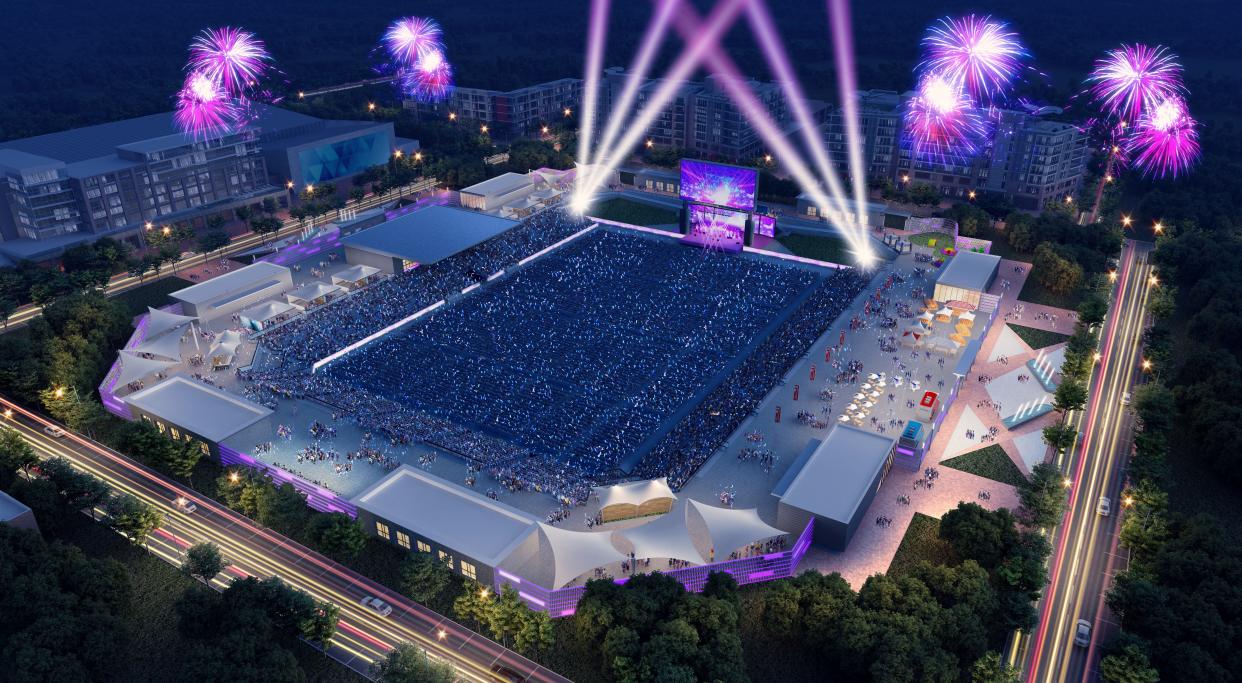City council is set to decide additional $30 million for MAPS 4 stadium on Jan. 16

The Oklahoma City Council is set to decide on Jan. 16 whether to allow the use of tax increment financing and funding previously allocated to the Omni to cover a $30 million budget gap for the MAPS 4 multi-use stadium.
The funding plan, recommended by a TIF review committee and approved Friday by the Oklahoma Economic Development Trust, would trigger donation of land south of Lower Bricktown by owners of the Energy FC.
Bob Funk Jr. and Tim McLaughlin, owners of the Energy FC, have a contract to buy nine acres south of Oklahoma City Boulevard and east of the BNSF railway viaduct ― a property that for decades was home to the Producers Cooperative Oil Mill.
Kenton Tsoodle, president of The Alliance for Economic Development of Oklahoma City, said the stadium was added to the MAPS 4 ballot with an expectation that the location would be on city-owned land without a donation or property or additional funding.
Why the potential cost of the new OKC stadium has risen
Cost estimates, meanwhile, have gone up from $41 million to $71 million due to rising construction costs and labor shortages.
The original stadium proposal included two options. The less expensive option was set at $37 million to $42 million and would have included 8,000 seats, a regulation-sized field that could accommodate youth soccer, rugby and lacrosse.
The second option, estimated at $67 million to $72 million, included 10,000 seats, air-conditioned suites, a larger concert stage, a secondary stage, shade structures and additional restrooms for large events.
Tsoodle said the additional funding would likely pay for a construction scope somewhere between the two original options.
Tax increment financing, often referred to as TIF, uses taxes on future gains on real estate values to pay for new infrastructure improvements. The fund accumulates for an approved district. Proceeds also can be used by taxing entities for public improvements.
The stadium and the land, which will be owned by the city, is in a yet-to-start “Core to Shore” TIF district. The project itself won’t generate property tax increment due to it being a public property. Tsoodle said the downtown TIF district, set to expire in 2026, is on track to end with a remaining balance of $20 million — funding proposed to help cover the cost gap of the stadium.
He said money reserved for an infrastructure request for the proposed Strawberry Fields development west of Scissortail Park is also available following a collapse in negotiations between developer Pat Salame and the city.
The $10 million is from an Omni debt service fund that is available after the fund exceeded the desired minimum set by the city.
Funk and McLaughlin started the Energy FC in 2013. The team is part of the USL Championship, second division of the United States Soccer Federation. The team played at Bishop McGuinness High School during its inaugural year and then played eight seasons at Taft Stadium.
Team operations were suspended for the 2022 season due to renovations at Taft Stadium, and the team was to return this year, but instead, the suspension was extended.
This article originally appeared on Oklahoman: Funding plan for Bricktown stadium up for OKC council approval

